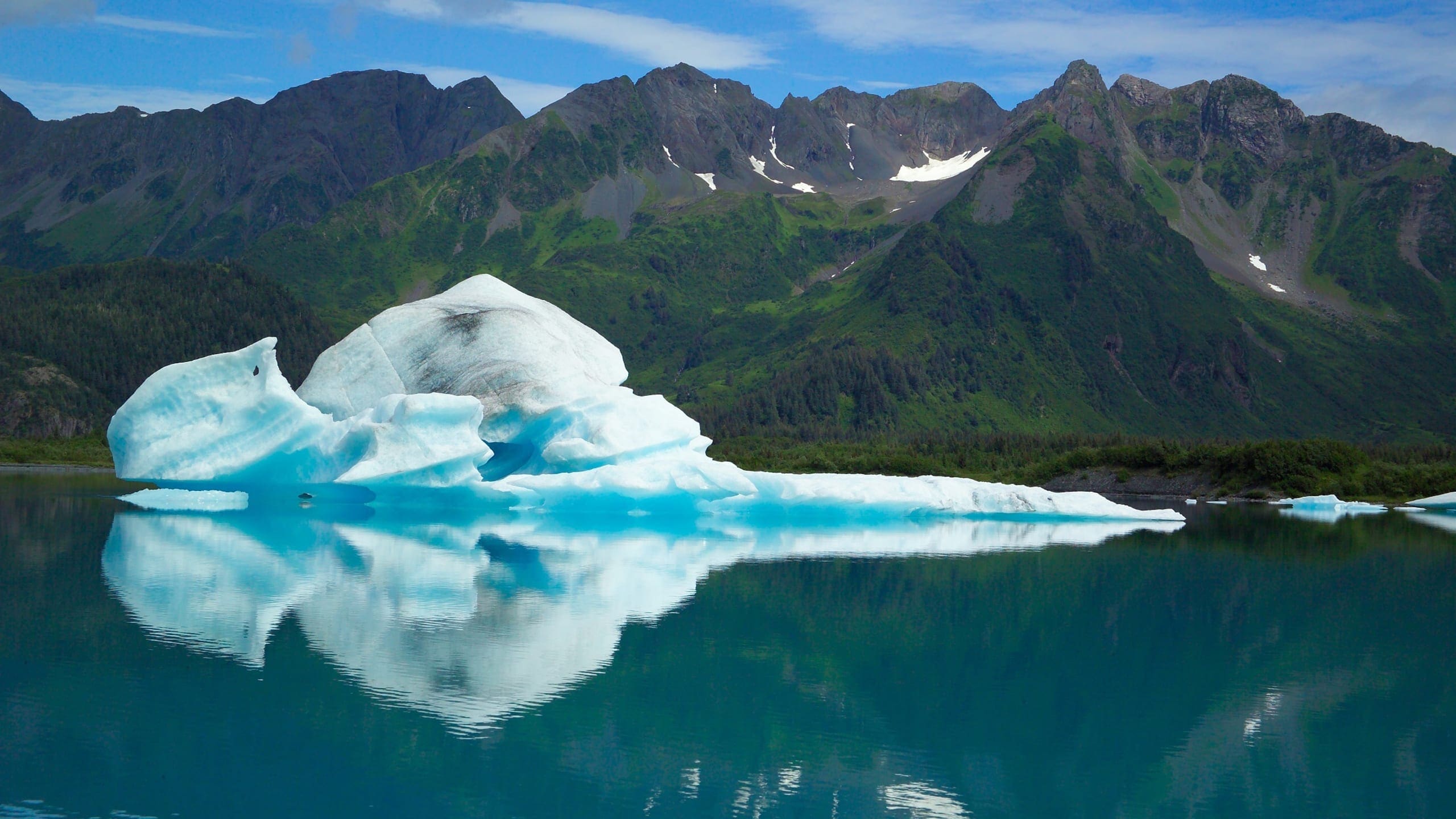About Kenai Fjords National Park
The Kenai Fjords National Park was established on December 2, 1980, under the Alaska National Interest Lands Conservation Act (ANILCA) to preserve in perpetuity unique fjord and rainforest ecosystems, the vast Harding Icefield, rich and varied marine and terrestrial wildlife, and historical and archeological reminders of the native peoples of the Alaska coast. In addition, Kenai Fjords National Park also provides for visitor enjoyment and access to the coastal fjords, Exit Glacier, and the Harding Icefield in a manner that maintains them unimpaired for future generations.
Sweeping from rocky coastline to glacier-crowned peaks, Kenai Fjords National Park is located on Alaska’s Kenai Peninsula, 128 miles southwest of Anchorage. The park is accessible by car, bus, train, boat, and plane. Kenai Fjords is approximately 601,839 acres including 545 miles of coastline, rugged and glaciated mountains, numerous glaciers, fjords, and bays, and abundant terrestrial and marine wildlife.
Kenai Fjords National Park encompasses a coastal mountain system on the southeastern side of the Kenai Peninsula. A 300-square-mile, nearly flat icefield overlies all but the tops of the central portion of the Kenai Mountains. The Harding lcefield, Kenai Fjords crowning feature and largest icefield contained completely within the United States is almost a mile above the Gulf of Alaska. Nearly 40 glaciers radiate out from the icefield in all directions. To the southeast they descend to a fjord system. Mountain ridges extend out into the Gulf of Alaska; their seaward ends have been depressed by tectonic forces so that only mountain tops remain above sea level. Glaciers carve the valleys between these jagged ridges, and fjords are created when ocean waters replace receding glaciers. Wildlife thrives in frigid waters and lush forests around this vast expanse of ice. Native Alutiiq relied on these resources to nurture a life entwined with the sea. Today, shrinking glaciers bear witness to the effects of our changing climate.
Kenai Fjords National Park has something for everyone. Whether you take atour or kayak in a remote fjord, you will be surrounded by pristine scenery and abundant wildlife. A hike to the top of the Harding Icefield Trail or scenic overflight gives you a window to past ice ages. At Exit Glacier you can stroll the trails, take a ranger-led walk, and get close enough to hear the creaks and groans of an active glacier as it slowly sculpts the landscape. Although much of the park is rugged wilderness, there are ways to explore for all interests and abilities. Boat tours depart Seward’s small boat harbor daily in the summer months. Several companies provide a variety of tour options, schedules, and amenities. Full-day tours that venture out to the park’s tidewater glaciers are available as well as half-day tours that stay in the more protected waters of Resurrection Bay while giving you a taste of the park’s wildlife and scenery.
The park’s headquarters and information center are located in the town of Seward, Alaska. The Exit Glacier area is accessible by road, approximately 12 miles from Seward. Additional access to the park is by small plane or by one of the many commercial tour and charter boats that ply the coast along Kenai Fjords. Most of these boats operate out of Seward.
Source: Foundation Document Overview – Kenai Fjords National Park
Fast Facts:
| Date the Park was Established: | December 2, 1980 |
| Park Area (as of 2019): | 669,650.05 acres (2,710.0 km2) |
| Recreational Visitors (2018 Total): | 321,596 visitors |


